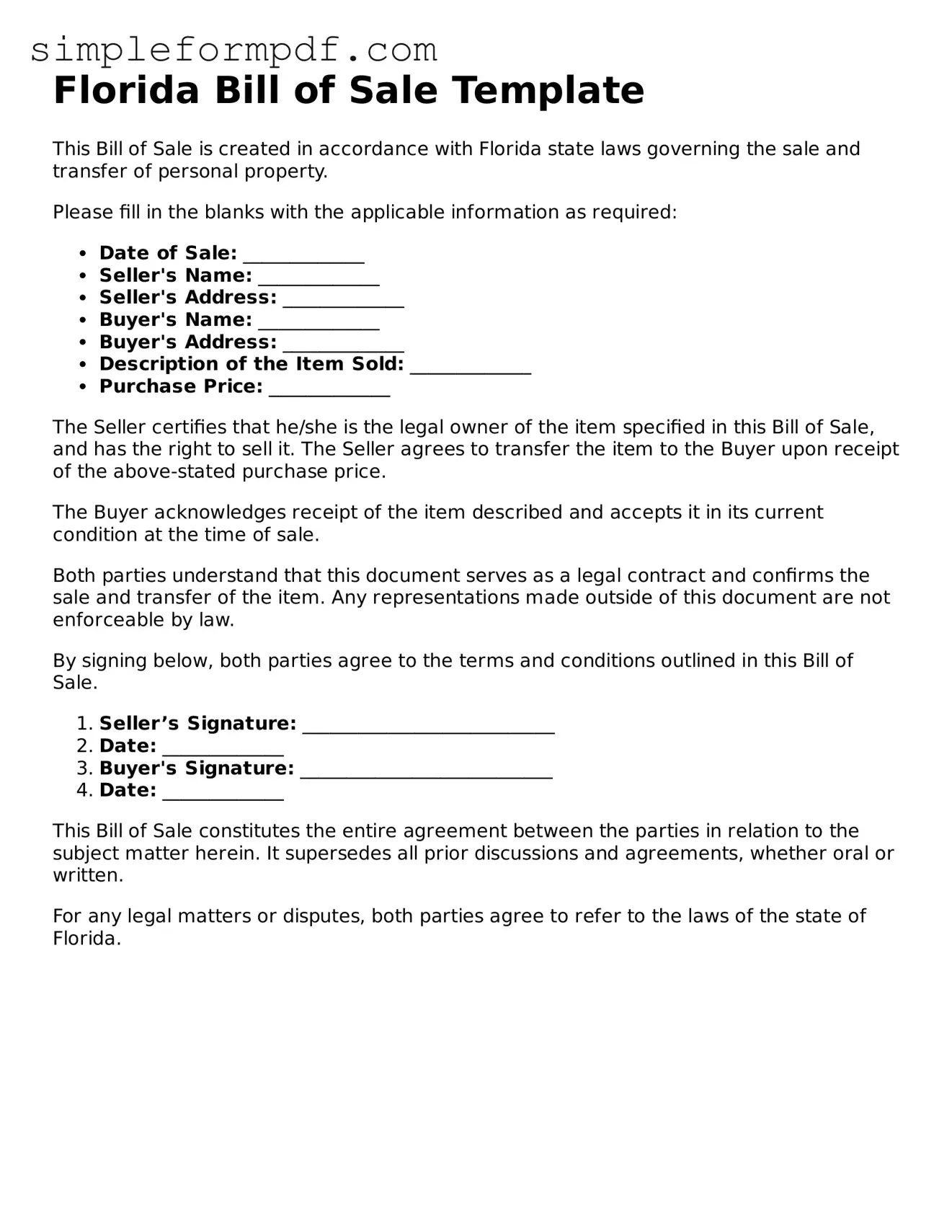Florida Bill of Sale Template
This Bill of Sale is created in accordance with Florida state laws governing the sale and transfer of personal property.
Please fill in the blanks with the applicable information as required:
- Date of Sale: _____________
- Seller's Name: _____________
- Seller's Address: _____________
- Buyer's Name: _____________
- Buyer's Address: _____________
- Description of the Item Sold: _____________
- Purchase Price: _____________
The Seller certifies that he/she is the legal owner of the item specified in this Bill of Sale, and has the right to sell it. The Seller agrees to transfer the item to the Buyer upon receipt of the above-stated purchase price.
The Buyer acknowledges receipt of the item described and accepts it in its current condition at the time of sale.
Both parties understand that this document serves as a legal contract and confirms the sale and transfer of the item. Any representations made outside of this document are not enforceable by law.
By signing below, both parties agree to the terms and conditions outlined in this Bill of Sale.
- Seller’s Signature: ___________________________
- Date: _____________
- Buyer's Signature: ___________________________
- Date: _____________
This Bill of Sale constitutes the entire agreement between the parties in relation to the subject matter herein. It supersedes all prior discussions and agreements, whether oral or written.
For any legal matters or disputes, both parties agree to refer to the laws of the state of Florida.
